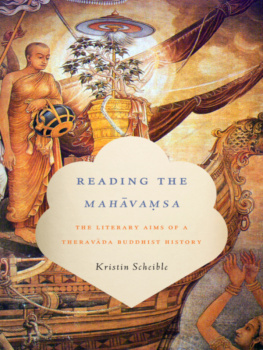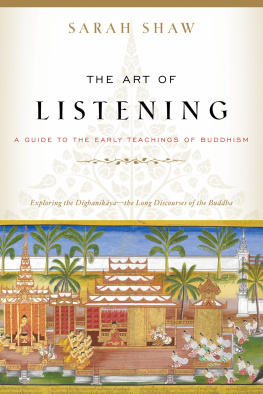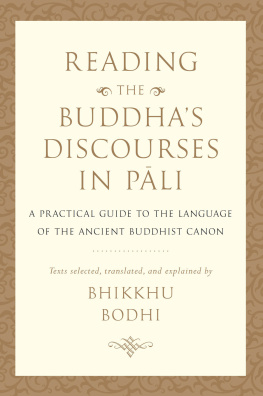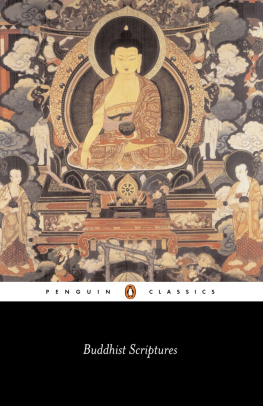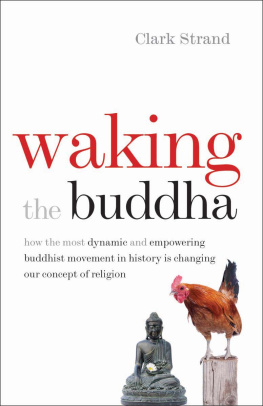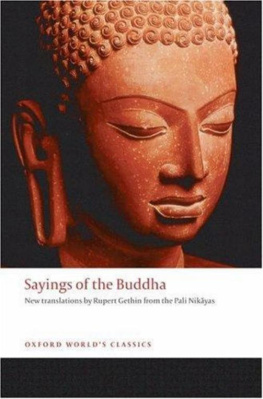Table of Contents
READING THE MAHVASA
SOUTH ASIA ACROSS THE DISCIPLINES
SOUTH ASIA ACROSS THE DISCIPLINES
EDITED BY MUZAFFAR ALAM, ROBERT GOLDMAN, AND GAURI VISWANATHAN
DIPESH CHAKRABARTY, SHELDON POLLOCK, AND SANJAY SUBRAHMANYAM, FOUNDING EDITORS
Funded by a grant from the Andrew W. Mellon Foundation and jointly published by the University of California Press, the University of Chicago Press, and Columbia University Press
South Asia Across the Disciplines is a series devoted to publishing first books across a wide range of South Asian studies, including art, history, philology or textual studies, philosophy, religion, and the interpretive social sciences. Series authors share the goal of opening up new archives and suggesting new methods and approaches, while demonstrating that South Asian scholarship can be at once deep in expertise and broad in appeal.
For a list of books in the series, see .
READING THE MAHVASA
THE LITERARY AIMS OF A THERAVDA BUDDHIST HISTORY
Kristin Scheible
COLUMBIA UNIVERSITY PRESS
NEW YORK
Columbia University Press
Publishers Since 1893
New York Chichester, West Sussex
cup.columbia.edu
Copyright 2016 Columbia University Press
All rights reserved
E-ISBN 978-0-231-54260-9
Library of Congress Cataloging-in-Publication Data
Names: Scheible, Kristin, author.
Title: Reading the Mahvaa : the literary aims of a Theravda Buddhist history / Kristin Scheible.
Description: New York : Columbia University Press, 2016. | Series: South Asia across the disciplines | Includes bibliographical references and index.
Identifiers: LCCN 2016002531 (print) | LCCN 2016038697 (ebook) | ISBN 9780231171380 (cloth : alk. paper) | ISBN 9780231542609 (electronic)
Subjects: LCSH: Mahnma, active 5th century. Mahvaa. | Buddhist literature, PaliHistory and criticism.
Classification: LCC BQ2607 .S35 2016 (print) | LCC BQ2607 (ebook) | DDC 294.3/824dc23
LC record available at https://lccn.loc.gov/2016002531
A Columbia University Press E-book.
CUP would be pleased to hear about your reading experience with this e-book at .
Cover design: Kat Lynch/Black Kat Design
Cover image: Bhikkhuni Sanghamitta delivering Bodhi scion, honored by ngas en route to Lak. Mural by Solias Mendis, Kelaniya Raja Maha Vihara. Pictures from History / Bridgeman Images
CONTENTS
T HIS BOOK began during my studies at Harvard. I was enchanted by many detours through semantic fields in Charlie Halliseys Pli classes and charged (as well as somewhat awed) by the bricolage of his social history seminar. I benefited from an array of Sanskrit courses taught by Stephanie Jamison. Kimberley Pattons classes (on images and animals) enabled me to write obsessively about ngas and take seriously the power of things to make people feel, cultivate, and sustain devotion. I taught for Diana Eck and thought comparatively and productively about myth, image, and pilgrimage. John Strongs seminar Relics of the Buddha made its lively debut at the Divinity School, which led me to my dissertation and to my adviser, Anne Monius. I am so thankful for the time I shared with these teachers.
This book simmered as I began my teaching career at Bard College, where I had many supportive colleagues. I am profoundly grateful for the enduring friendship of historian and classicist Carolyn Dewald and professor of religion and Asian studies Richard H. Davis. As a mentor, Richard helped me search through my personal oscillating universe for the elusive balance among teaching and student-centered activities, research, professional obligations, college committees and commitments, and family life.
The organizers of the Five College Buddhist Studies Faculty Seminar didnt have to include me in their cohort of regulars, but they did, luring me month after month from the Hudson to the Pioneer Valley. I have benefited from these enriching conversations and look forward to future collaborations. I received extraordinarily helpful feedback when I presented some of my work to the group. I especially value Andy Rotman and Maria Heim as friends and interlocutors; their questions and insights have been invaluable as I have given shape to this project. A workshop at Amherst College in 2014, The Exegesis of Emotions and the Body in Text, permitted me to further develop my material before I relocated to Reed College. Engaging conversations with supportive colleagues in the Reed Religion Department (Ken Brashier, Mike Foat, Kambiz GhaneaBassiri, and Steve Wasserstrom) and teaching and lecturing in the humanities curriculum have helped to hone my arguments. I am fortunate to have found an intellectual and pedagogical home at Reed, where I am doing my part to help the humanities thrive.
Several people have read and commented on the manuscript and deserve great thanks. As the book took shape, it benefited from the expert editorial eyes of Janna White and the enthusiastic readings by adventurous undergraduates at both Bard and Reed. Comments from an anonymous initial reader for the South Asia Across the Disciplines series encouraged me, and I feel such gratitude for the time and effort as well as the heartening commendations and constructive feedback from the two anonymous manuscript reviewers. The entire editorial team at Columbia University Press, especially Associate Editor Christine Dunbar and Publisher for Philosophy and Religion Wendy Lochner, as well as freelance copyeditor Annie Barva have been attentive, supportive, and patient through what has been an unusual time. As this book took shape, my youngest son was diagnosed with alveolar rhabdomyosarcoma and has suffered years of doctors, hospitals in three states, chemotherapy, radiation, surgeries, and more. This book is dedicated to my family, the most supportive and loving crew: Pat, for reading everything as well as for holding down the fort and my anxiety level, and my kids, Aidan, Elias, and Jaspermay the savega turn to pasda.
S ANSKRIT AND Pli terms herein follow conventions of transliteration, and I have sought to align terms with religious contexts (so, Sanskrit dharma when talking about Sanskrit texts and Pli dhamma when immersed in the world of Pli texts; the same pattern goes for bodhisattva/bodhisatta, stra/sutta, and so on).
The transliterations of the Dpavasa and Mahvasa provided in the text and notes are from Dpavasa: An Ancient Buddhist Historical Record, ed. and trans. Hermann Oldenberg (1879; reprint, New Delhi: Asian Educational Services, 1982), and Mahnma, The Mahvasa, ed. Wilhelm Geiger (London: Frowde for Pli Text Society, 1908).
All translations from the Pli are mine unless otherwise indicated.
I N THE study of religions, we find that certain key texts come to define their interpretive communities, for both the communities themselves and the scholars who study them. Texts are an appealing source for the cultivation of understanding; they seem stable and fixed in a way that a religious community, comprising people who change through time and contexts, simply is not. But a text is not a source unless it is brought to life through reading and interpretation, irrespective of the vicissitudes of time and context. Reading and interpretation necessarily negate, to some extent, the stability or fixedness of a given text, and the imagination at work in reading and interpretation opens up possibilities for transformation.

